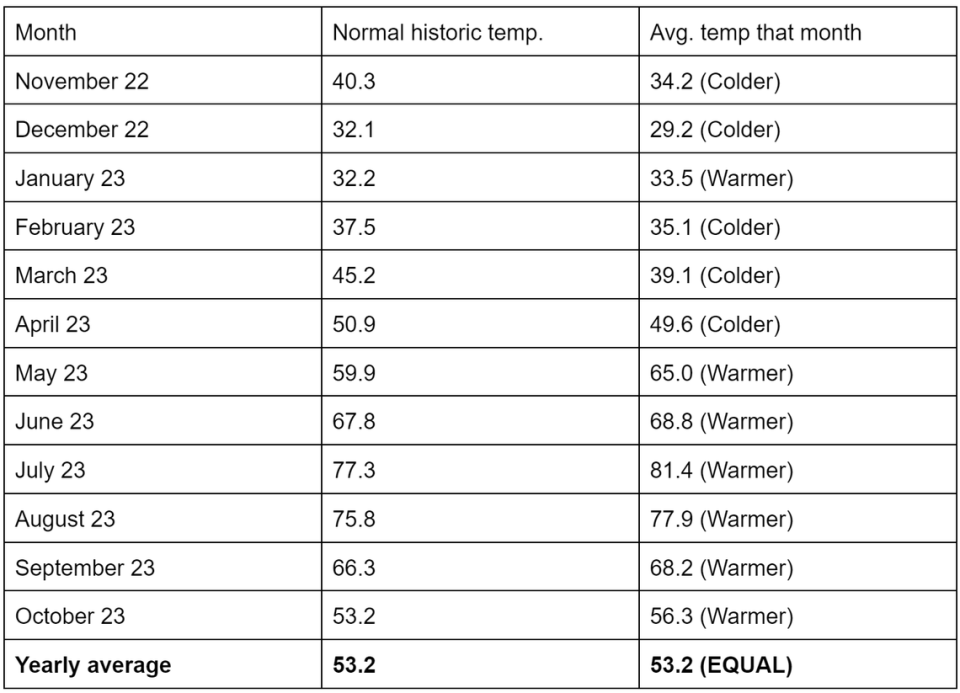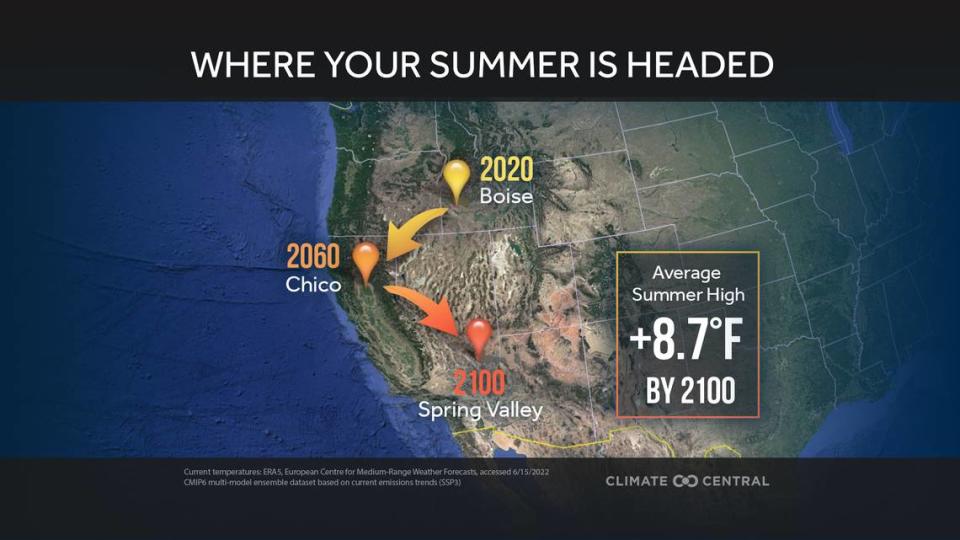Earth just recorded its hottest 12-month period. How did Boise fare in that time?
You might not have realized it in Idaho, but the planet just lived through the hottest recorded 12-month period in Earth’s history.
From November 2022 to October 2023, global temperatures were 2.3 degrees Fahrenheit above pre-industrial levels, considered from 1850 to 1900. That includes temperatures from the hot deserts around the equator to the frozen tundras of the poles.
Based on research from Climate Central, a nonprofit that analyzes climate science, at least 90% of people on Earth experienced at least 10 days in the past year that were heavily impacted by climate change. Additionally, about three in four people experienced more than a month’s worth of extreme heat because of climate change, the organization said.
The yearlong stretch is the latest milestone in a series of climate-related records. Earlier this year, Earth recorded its hottest-ever month, and Boise didn’t escape. In July, a “heat dome” caused temperatures in the City of Trees to soar above 100 degrees regularly, resulting in Boise having an average high of 97.2 degrees — 4.5 degrees hotter than usual.
But over the course of the year, how did Boise fit in the grander scheme of Earth’s ever-increasing temperatures?
Was Boise historically hot?
Over a typical year, the average temperature in Boise is 53.2 degrees. Boise’s average temperature between November 2022 and October 2023?
Exactly 53.2 degrees.

That would indicate that Boise was not affected too much by the worldwide warming trend. But a closer look shows hotter summer temperatures followed a cooler-than-average winter and spring.
From November to April, Boise experienced warmer-than-average temperatures just once, in January, when it was 1.3 degrees warmer than usual.
“There is some idea that as the worldwide jet stream weakens, unusual things happen,” National Weather Service meteorologist Les Colin told the Idaho Statesman. “In the sense that some of the cold air masses that would be locked up near the poles are able to break through to lower latitudes temporarily.”
The weakening jet stream provided a cold block for the northern reaches of North America. The effect of the weakened jet stream in Boise was felt. In March, the City of Trees broke a 74-year-old cold-weather record and had a late-in-the-season snowfall not seen since 1905.
But once the jet stream strengthened again — due to numerous meteorological factors, such as the location of pressure systems and seasonal changes — Boise was exposed to the heat billions of other people worldwide were already experiencing.
Every month since May has been warmer than average in Boise — no stranger to hot summers — primarily because of a developing El Niño that’s now in full strength.
El Niño occurs when trade winds — the permanent east-to-west winds that blow near the equator — weaken, allowing the Pacific Ocean’s warmer waters to push back east toward the United States’ West Coast. This typically means warmer temperatures and drier conditions for the Pacific Northwest.
“What we’re getting this fall is unusual for this area,” Colin said. “Normally, our fall is short, and most years, it goes directly into winter by this time of year.”
According to Colin, the average first snowfall of the year in Boise is Nov. 18. The forecast this year? A high of 58 degrees and a chance of rain.
What does the future hold for Boise?
In the near future, it’s looking as if it will be a warmer-than-average winter for Boise.
El Niño is expected to persist through the winter, and the three-month temperature outlook from the Climate Prediction Center gives Idaho a 40%-50% chance of above-average temperatures.
Weather Service meteorologist Joel Tannenholz told the Statesman that he doesn’t know whether Earth will continue to set heat records, but the odds are good that Boise and this are of the U.S. will see warm temperatures this winter.
In the long term, Boise could be feeling like the Nevada desert in less than 80 years, according to an analysis by Climate Central, which said temperatures will be 8.7 degrees hotter than today on average. That would put the City of Trees on par with Spring Valley, a suburb 2 miles outside Las Vegas.

The Las Vegas area currently experiences an average summer high of 100.8 degrees.
“I don’t have any reason to think this is a wildly outrageous sort of expectation and is probably a pretty good estimate,” Alejandro Flores, a professor at Boise State University’s Department of Geosciences, previously told the Statesman.
Even by 2060, Boise will have summer temperatures similar to Chico, California. Chico, about 90 miles north of Sacramento, experiences an average summer high of 95.9 degrees.

